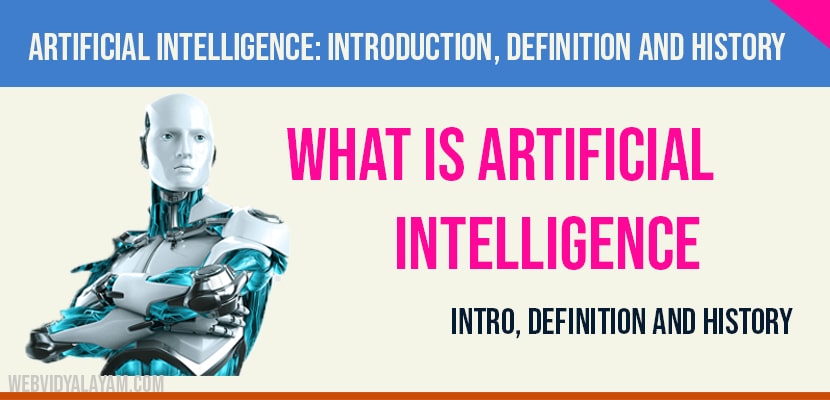Introduction:
Artificial Intelligence is a growing topic in today’s world. Everything that we are using in our day to day life is coupled with Artificial Intelligence. Real time applications of Artificial Intelligence in our daily life in smart phones .We all use smart phones with the help- of internet we are searching the information through some browser. The very next time when you search the similar information it will suggest you the previous search. Similarly whenever you shop through online applications like Amazon etc., The next time you open the application it will show you the suggestions regarding your previous search. Do you know how this is possible? Here the data is stored in cloud storage with the help of AI by using predictive analytics.
Definition of AI:
AI refers to the intelligence signified by the machines. The main goal of AI is to replicate the behaviour of human brain involved in certain activities like problem solving and decision making. Here the machines refers to anything that endorse the characteristics associated with human brain.
History of AI:
Leonardo Da Vinci has designed a humanoid robot in the year 1495.In 1651,Thomas Hobbes published his book named as Leviathan which specifies social contract and the ideal state and stated that “it might be possible to build Artificial Animal”. In 1738, French inventor and engineer Jacques de Vaucanson invented the mechanical duck which can flap its wings paddle, drink, eat and digest grains. In 1801french silk weaver and inventor Joseph marie Jacquard invents an automated loom that is controlled by punch cards.In1900,Frank Baum invented the robot named the wonderful Wizard of OZ. Karel capek introduced the term robot in the play RUR(Rossum’s Universal Robots).In 1948,Dr.W Grey Walter interested in what if robots could model brain functions. He built two small robots named as Elmer and Elsie. These two robots Elmer and Elsie do not have brains or pre programming. In these robots instead of using basic analog circuits vacuum tubes and two sensors for light and touch are incorporated which recharges themselves when they sense their batteries are running down.
